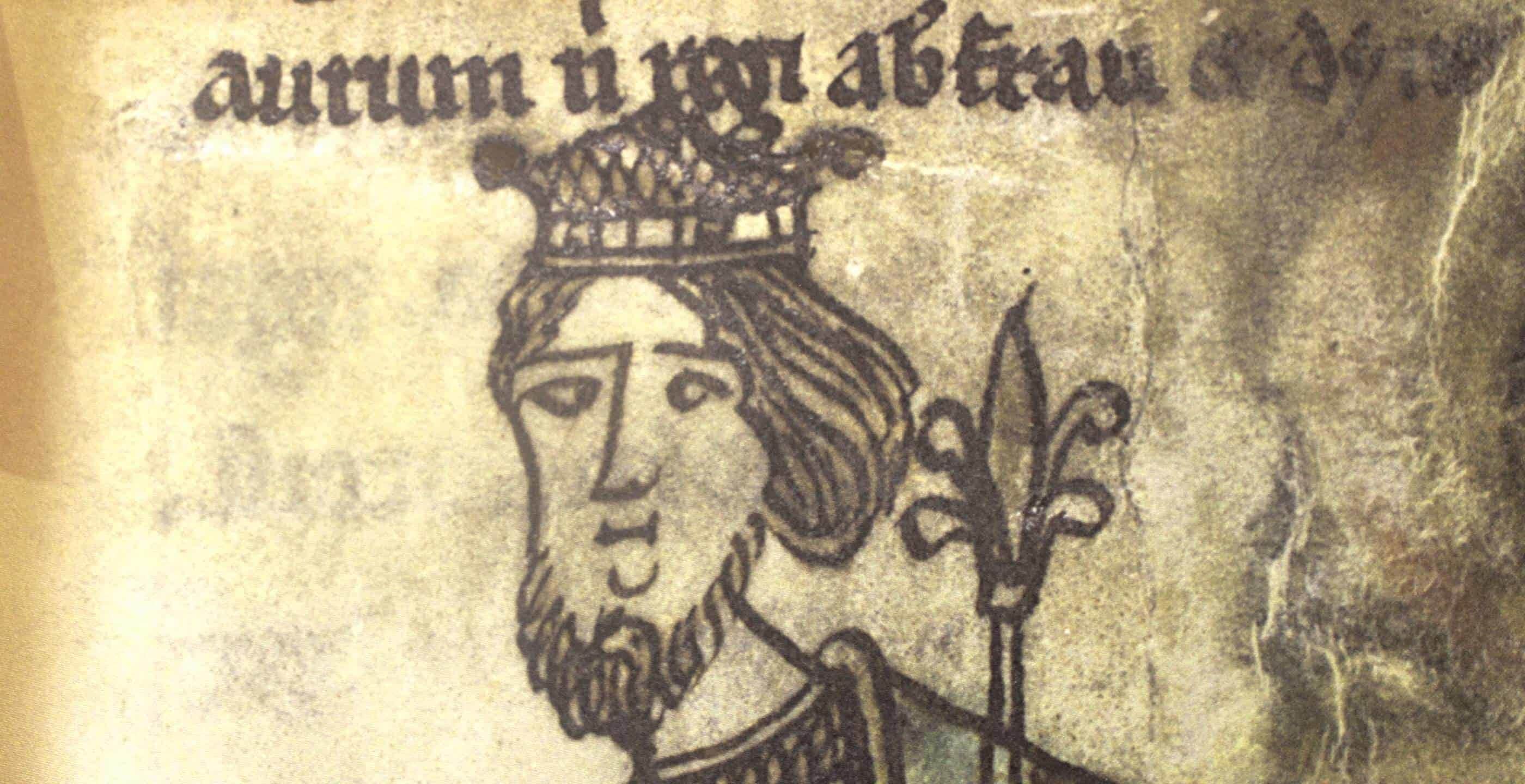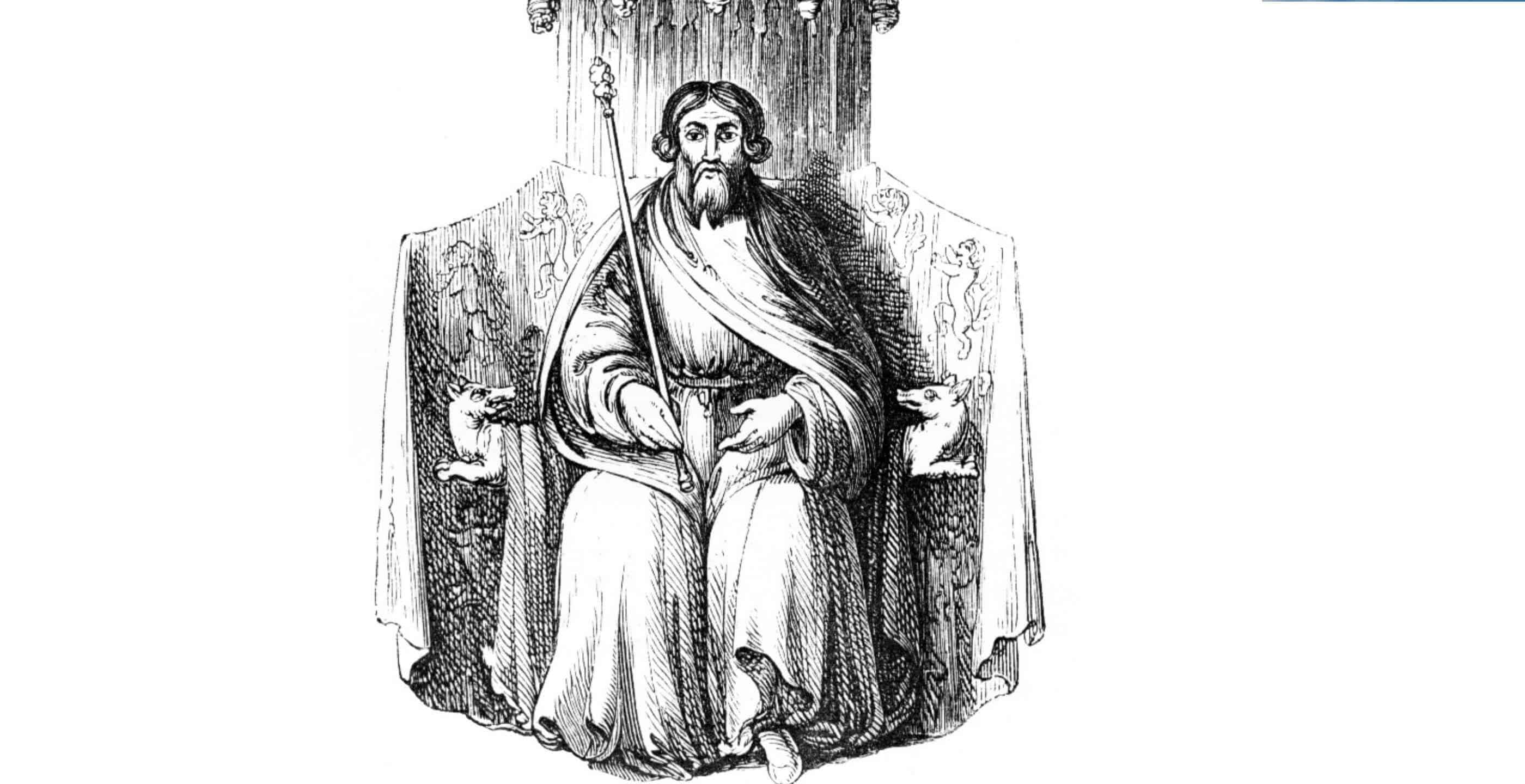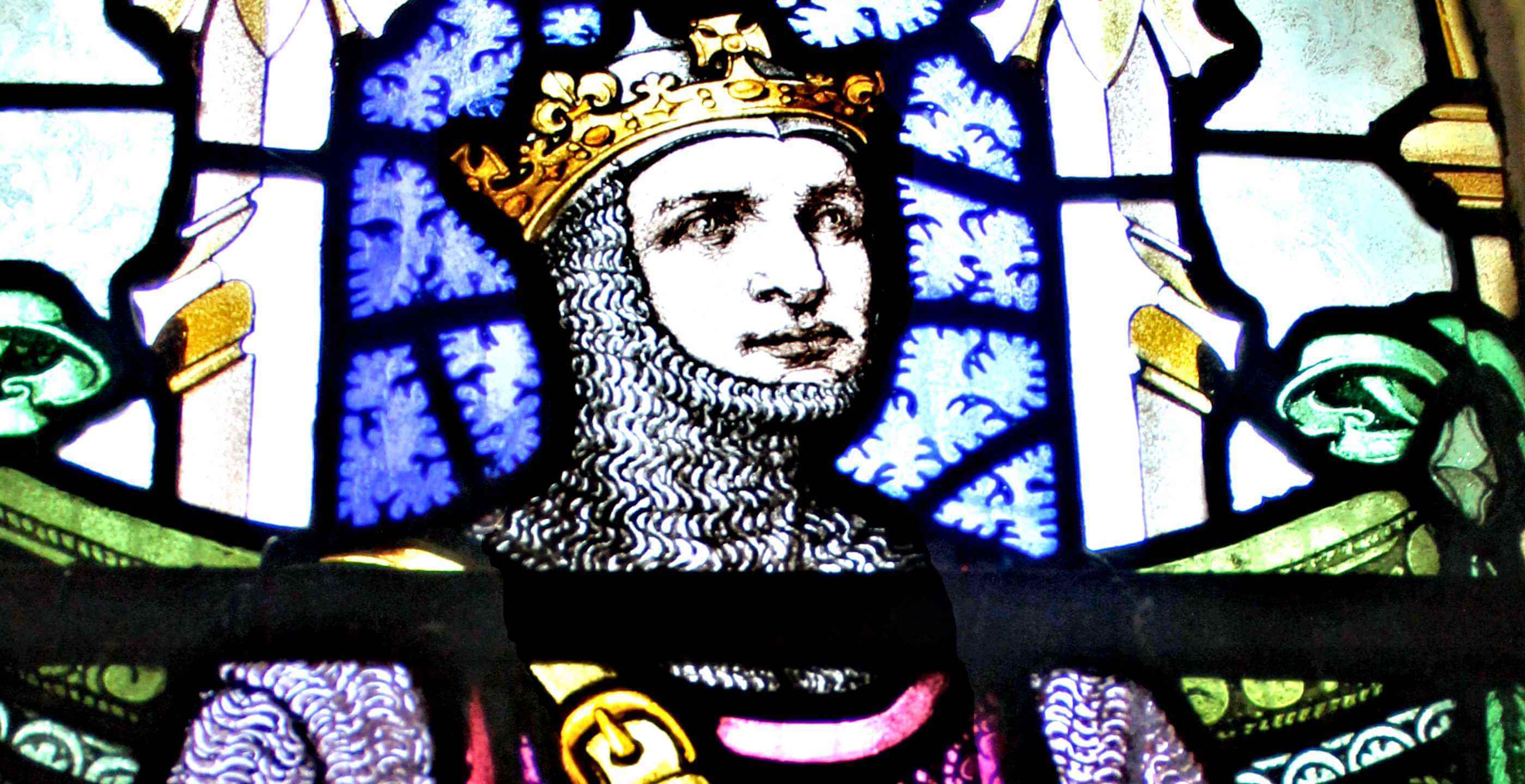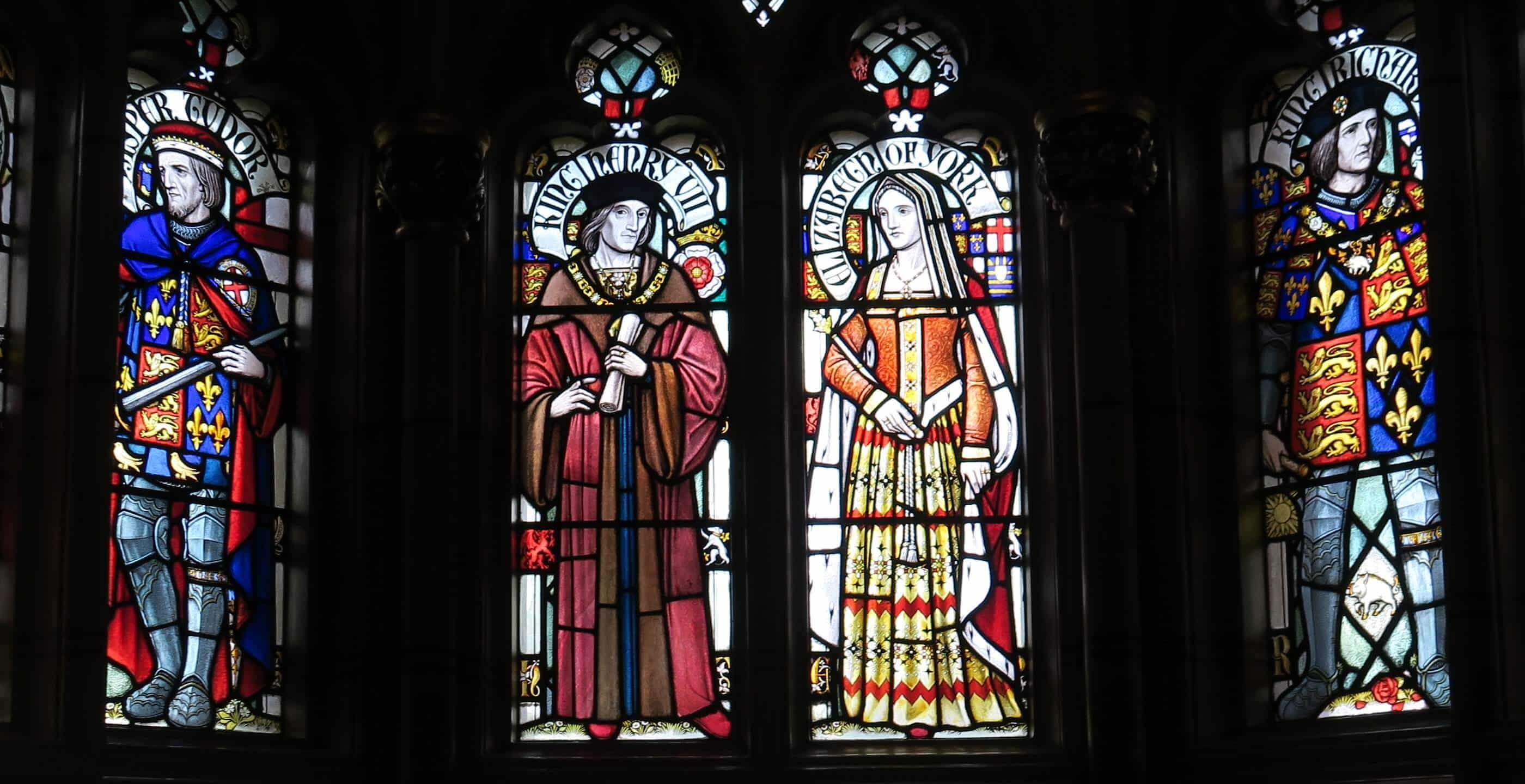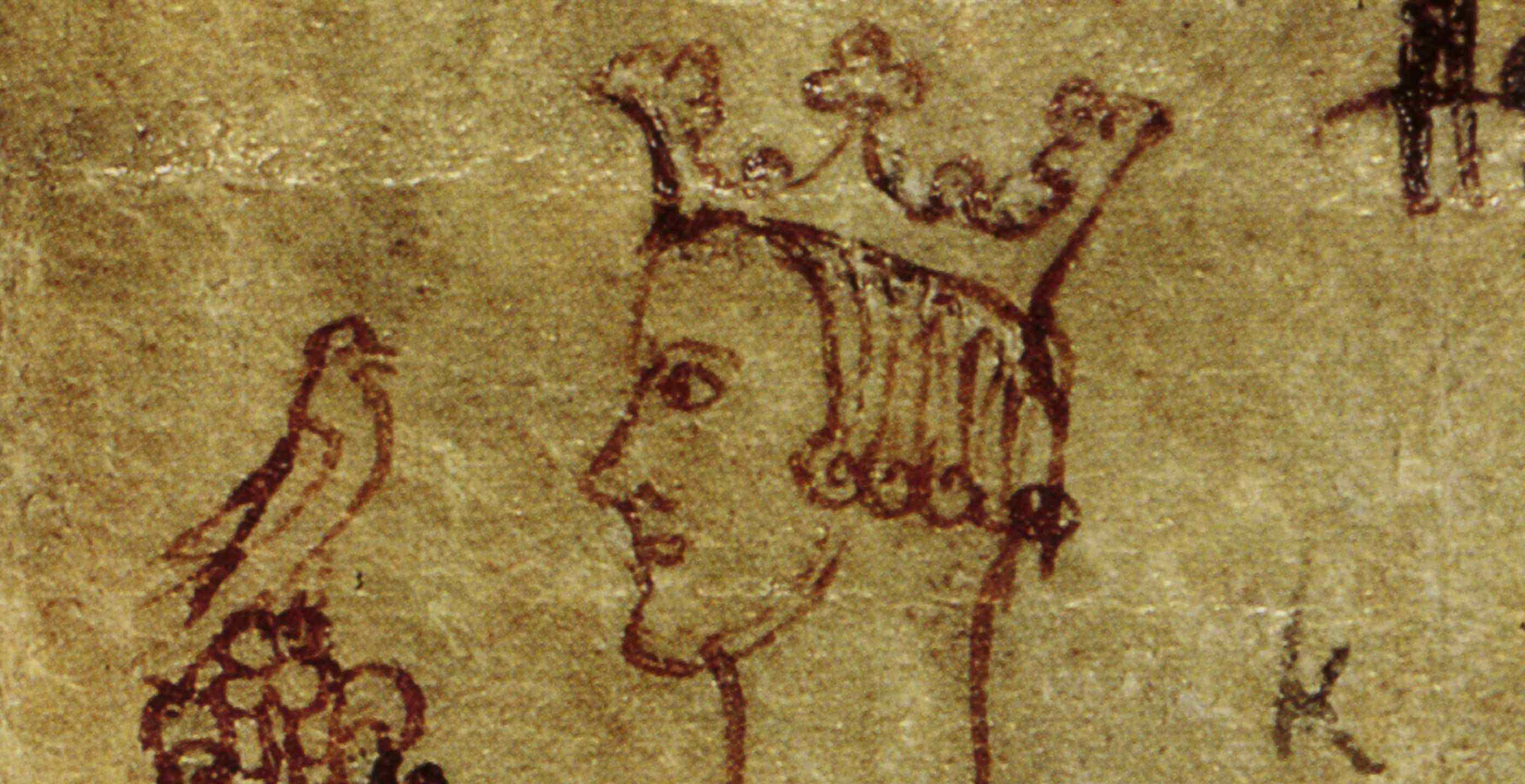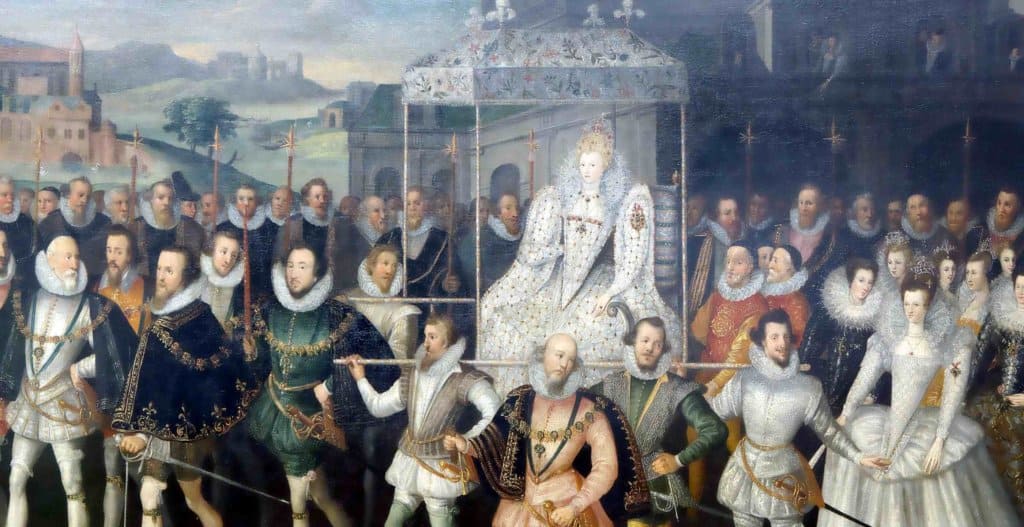Although the Romans invaded Wales in the first century AD, only South Wales ever became part of the Roman world as North and Mid-Wales is largely mountainous making communications difficult and presenting obstacles to any invader.
After the Roman period the Welsh kingdoms that emerged were the ones that commanded stretches of useful lowland, especially Gwynedd in the north, Ceredigion in the south-west, Dyfed (Deheubarth) in the south and Powys in the east. Powys would always be at a disadvantage however, due to its close proximity to England.
The great princes of medieval Wales were all westerners, mainly from Gwynedd. Their authority was such that they could wield authority well beyond the borders of their kingdoms, enabling many to claim to rule all Wales.
Below is a list of the kings and princes of Wales from Rhodri the Great to Llywelyn ap Gruffydd ap Llywelyn, followed by the English Princes of Wales. After the Conquest of Wales, Edward I created his son ‘Prince of Wales’ and since then, the title ‘Prince of Wales’ has been given to the heir apparent to the English and British throne. HRH Prince William currently holds the title.
Sovereigns and Princes of Wales 844 – 1283
| 844-78 | Rhodri Mawr the Great. King of Gwynedd. The first Welsh ruler to be called ‘Great’ and the first, by virtue of peaceful inheritance and marriage, to rule most of present-day Wales. Much of Rhodri’s reign was spent fighting, especially against Viking marauders. He was killed in battle alongside his brother fighting Ceolwulf of Mericia. |
| 878-916 | Anarawd ap Rhodri, Prince of Gwynedd. Following the death of his father, Rhodri Mawr’s lands were divided with Anarawd receiving part of Gwynedd, including Anglesey. In campaigns against his brother Cadell ap Rhodri who ruled Ceredigion, Anarawd sought help from Alfred of Wessex. He was well received, with the king even acting as his godfather at Anarawd’s confirmation. Acknowledging Alfred as his overlord, he gained equality with Ethelred of Mercia. With English help he ravaged Ceredigion in 895. |
| 916-42 | Idwal Foel ‘the Bald’, King of Gwynedd. Idwal inherited the throne from his father Anarawd. Although he intially allied himself with the Saxon court, he rebelled against the English fearing they would usurp him in favour of Hywel Dda. Idwal was killed in the battle that followed. The throne should have passed to his sons Iago and Ieuaf, however Hywel invaded and expelled them. |
| 904-50 | Hywel Dda (Hywel the Good), King of Deheubarth. The son of Cadell ap Rhodri, Hywel Dda inherited Ceredigion from his father, gained Dyfed by marriage and acquired Gwynedd following the death of his cousin Idwal Foel in 942. Thus, most of Wales was united during his reign. A frequent visitor to the House of Wessex, he even made a pilgrimage to Rome in 928. A scholar, Hywel was the only Welsh ruler to issue his own coins and compile a code of law for the country. |
| 950-79 | Iago ab Idwal, King of Gwynedd. Excluded from the kingdom by his uncle Hywel Dda after his father was killed in battle, Iago together with his brother Ieuaf returned to reclaim their throne. In 969 following some brotherly banter, Iago imprisoned Ieuaf. Iago ruled for another ten years before Iehaf’s son Hywel usurped him. Iago was one of the Welsh princes that paid homage to the English king, Edgar, at Chester in 973. |
| 979-85 | Hywel ap Ieuaf (Hywel the Bad), King of Gwynedd. In 979 assisted by English troops, Hywel defeated his uncle Iago in battle. That very same year Iago was captured by a force of Vikings and mysteriously disappeared, leaving Hywel as the sole ruler of Gwynedd. In 980 Hywel defeated an invading force led by Iago’s son, Custennin ab Iago, in Anglesey. Custennin was killed in the battle. Hywel was killed by his English allies in 985 and was succeeded by his brother Cadwallon ap Ieuaf. |
| 985-86 | Cadwallon ap Ieuaf, King of Gwynedd. Succeeding to the throne following the death of his brother Hywel, he ruled for just one year before Maredudd ab Owain of Deheubarth invaded Gwynedd. Cadwallon was killed in the battle. |
| 986-99 | Maredudd ab Owain ap Hywel Dda, King of Deheubarth. After defeating Cadwallon and adding Gwynedd to his kingdom, Maredudd effectively united north and south Wales. During his reign Viking raids were a constant problem with many of his subjects being slaughtered or taken as captives. Maredudd was said to have then paid a considerable ransom for the freedom of the hostages. |
| 999-1005 | Cynan ap Hywel ab Ieuaf, Prince of Gwynedd. The son of Hywell ap Ieuaf, he inherited the throne of Gwynedd after the death of Maredudd. |
| 1005-18 | Aeddan ap Blegywryd, Prince of Gwynedd. Although of noble blood, it is unclear how Aeddan siezed the throne of Gwynedd following the death of Cynan as he was not in the direct line of royal succession. In 1018 his leadership was challenged by Llywelyn ap Seisyll, Aeddan and his four sons were killed in the battle. |
| 1018-23 | Llywelyn ap Seisyll, King of Deheubarth, Powys and Gwynedd. Llywelyn gained the throne of Gwynedd and Powys by defeating Aeddan ap Blegywryd, and then went on to take control of Deheubarth by killing the Irish pretender, Rhain. Llywelyn died in 1023 leaving behind his son Gruffudd, who perhaps too young to succeed his father, would become the first and only true King of Wales. |
| 1023-39 | Iago ab Idwal ap Meurig, King of Gwynedd. The great-grandson of Idwal ab Anarawd, the rule of Gwynedd returned to the ancient bloodline with the accession of Iago. His reign of six years ended when he was murdered and replaced with Gruffydd ap Llywelyn ap Seisyll. His son Cynan was exiled to Dublin for his own safety. |
| 1039-63 | Gruffudd ap Llywelyn ap Seisyll, King of Gwynedd 1039-63 and overlord of all the Welsh 1055-63. Gruffudd seized control of Gwynedd and Powys after he had killed Iago ab Idwal. Following earlier attempts, Deheubarth finally came into his possession in 1055. A few years later Gruffudd seized Glamorgan, driving out its ruler. And so, from about 1057 Wales was one, under one ruler. Gruffud’s rise in power obviously attracted the attention of the English and when he defeated the forces of Leofric, earl of Mercia, he perhaps took a step too far. Earl Harold Godwinson of Wessex was despatched to take revenge. Leading forces over land and sea Harold pursued Gruffud from place to place until he was killed somewhere in Snowdonia on 5 August 1063, possibly by Cyan ap Iago, whose father Iago had been murdered by Gruffud in 1039. |
| 1063-75 | Bleddyn ap Cynfyn, King of Powys, together with his brother Rhiwallon, were installed as co-rulers of Gwynedd following the death of Gruffudd ap Llywelyn. Having submitted to Earl Harold Godwinson of Wessex, they swore allegiance to the then king of England, Edward the Confessor. Following the Norman Conquest of England in 1066, the brothers joined the Saxon resistance to William the Conqueror. In 1070, Gruffud’s sons challenged Bleddyn and Rhiwallon in an attempt to win back part of their fathers kingdom. Both sons were killed at the Battle of Mechain. Rhiwallon also lost his life in the battle, leaving Bleddyn to rule Gwynedd and Powys alone. Bleddyn was killed in 1075 by King Rhys ab Owain of Deheubarth. |
| 1075-81 | Trahaern ap Caradog, King of Gwynedd. Following the death of Bleddyn ap Cynfyn, it appears that none of his sons were old enough to claim the throne and Bleddyn’s cousin Trahaearn seized power. In the same year that he seized the throne, he briefly lost it again when an Irish force landed in Anglesey led by Gruffydd ap Cynan. Following tensions between Gruffydd’s Danish-Irish bodyguard and local Welsh folk, a rebellion in Llyn gave Trahaern the opportunity to counterattack; he defeated Gruffydd at the Battle of Bron yr erw. Gruffydd was forced back into exile in Ireland. Trahaern met his end at the fierce and bloody Battle of Mynydd Carn in 1081, after Gruffydd had once again invaded with an army of Danes and Irish. |
| 1081-1137 | Gruffydd ap Cynan ab Iago, King of Gwynedd, born in Ireland of the royal line of Gwynedd. Following several failed attempts Gruffydd finally siezed power after defeating Trahaern at the Battle of Mynydd Carn. With much of his kingdom now overrun by Normans, Gruffydd was invited to a meeting with Hugh, Earl of Chester, where he was seized and taken prisoner. Imprisoned for several years, he was said to be being held in chains in the market-place when Cynwrig the Tall visited the city. The story continues that seizing his opportunity, Cynwrig picked up Gruffydd and carried him out of the city on his shoulders, chains and all. Joining the anti-Norman rebellion of 1094, Gruffydd was driven out yet again, retiring once more to the safety of Ireland. Through the constant threat of Viking attacks, Gruffydd returned once more as ruler of Anglesey, swearing allegiance to King Henry l of England |
| 1137-70 | Owain Gwynedd, King of Gwynedd. During his father’s old age, Owain together with his brother Cadwaladr had led three succesful expeditions against the English between 1136-37. Benefiting from the anarchy in England, Owain significantly extended the boundaries of his kingdom. After Henry II succeeded to the English throne however, he challenged Owain who, recognising the need for prudence, swore allegiance and changed his own title from king to prince. Owain maintained the agreement until 1165 when he joined a general rebellion of the Welsh against Henry. Thwarted by bad weather, Henry was forced to retreat in disorder. Infuriated by the rebellion, Henry murdered a number of hostages including two of Owain’s sons. Henry did not invade again and Owain was able to push the borders of Gwynedd to the banks of the River Dee. |
| 1170-94 | Dafydd ab Owain Gwynedd, Prince of Gwynedd. After the death of Owain, his sons argued over the lordship of Gwynedd. In the years that followed and in the ‘brothery love’ that ensued, one after another of Owain’s sons were either killed, exiled or imprisoned, until only Dafydd was left standing. By 1174, Owain was the sole ruler of Gwynedd and later that year he married Emme, the half-sister of King Henry II of England. In 1194, he was challenged by his nephew Llywelyn ap Iorwerth, ‘the Great’, who defeated him at the Battle of Aberconwy. Dafydd was captured and imprisoned, later retiring to England, where he died in 1203. |
| 1194-1240 | Llywelyn Fawr (Llywelyn the Great), King of Gwynedd and eventually ruler of all Wales. The grandson of Owain Gwynedd, the early years of Llywelyn’s reign were spent eliminating any likely rivals to the throne of Gwynedd. In 1200, he made a treaty with King John of England and married John’s illegitimate daughter Joan, a few years later. In 1208, following the arrest of Gwenwynwyn ap Owain of Powys by John, Llywelyn took the opportunity to seize Powys. Friendship with England was never going to last and John invaded Gwynedd in 1211. Although Llywelyn lost some lands as a result of the invasion, he quickly recovered them the following year as John became embroiled with his revolting barons. In the famous Magna Carta reluctantly signed by John in 1215, special clauses secured the rights of Llywelyn in issues relating to Wales, including the release of his illegitimate son Gruffydd, who had been taken hostage in 1211. Following King John’s death in 1218, Llywelyn agreed the Treaty of Worcester with his successor Henry III. The treaty confirmed all of Llywelyn’s recent conquests and from then until his death in 1240, he remained the dominant force in Wales. In his latter years Llywelyn planned to adopt primogeniture to secure his princedom and legacy for future generations. |
| 1240-46 | Dafydd ap Llywelyn, the first ruler to claim the title Prince of Wales. Although his older half-brother Gruffydd also had claim to the throne, Llywelyn had taken exceptional steps to have Dafydd accepted as his sole heir. One of these steps included having Daffydd’s mother Joan (daughter of King John), declared legitimate by the Pope in 1220. Following his fathers death in 1240, Henry III accepted Daffydd’s claim to rule Gwynedd. He was however, not prepared to allow him to retain his father’s other conquests. In August 1241, the king invaded, and after a short campaign Dafydd was forced to give up his lands, as well as his half-brother, Gruffydd as hostage. In March 1244, Gruffydd fell to his death while trying to escape from the Tower of London by climbing down a knotted sheet. Daffydd died young and without an heir: his dominion was once more divided. |
| 1246-82 | Llywelyn ap Gruffydd, ‘Llywelyn the Last’, Prince of Wales. The second of the four sons of Gruffydd, the eldest son of Llywelyn the Great, Llywelyn defeated his brothers at the Battle of Bryn Derwin to become the sole ruler of Gwynedd. Making the most of the barons’ revolt against Henry III in England, Llywelyn was able to regain almost as much territory as his esteemed grandfather had ruled over. He was officially recognised as the Prince of Wales by King Henry in the Treaty of Mongomery in 1267. The succession of Edward I to the Crown of England would prove his downfall. Llywelyn had made an enemy of King Edward by continuing to ally himself with the family of Simon de Montfort, one of the leaders of the baron’s revolt. In 1276, Edward declared Llywelyn a rebel and gathered an enormous army to march against him. Llywelyn was forced to seek terms, which included confining his authority to part of western Gwynedd once again. Renewing his rebellion in 1282, Llywelyn left Dafydd to defend Gwynedd and took a force south, trying to rally support in mid and south Wales. He was killed in a skirmish near Builth. |
| 1282-83 | Dafydd ap Gruffydd, Prince of Wales. Following the death of his brother Llywelyn a year earlier, the four hundred year dominance in Wales by the House of Gwynedd was brought to an end. Condemned to death for high treason against the king, Dafydd would be first prominent person in recorded history to be hanged, drawn and quartered. The last independent Welsh kingdom fell and the English gained control of the country. |
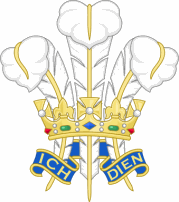 English Princes of Wales From 1301 |
|
| 1301 | Edward of Caernarfon (Edward II). The son of Edward I, Edward was was born in Caernarfon Castle in North Wales on 25th April, just a year after his father had conquered the region. |
| 1343 | Edward the Black Prince. The eldest son of King Edward III, the Black Prince was an exceptional military leader and fought alongside his father at the Battle of Crécy aged just sixteen. Also known as Edward of Woodstock, he died before his father and so his son, Richard II, succeeded to the throne. |
| 1376 | Richard of Bordeaux (Richard II). The son of Edward the Black Prince and Joan, Countess of Kent. Richard’s father died in 1376, leaving Richard as the heir apparent. The 10-year-old Richard succeeded to the throne upon the death of his grandfather King Edward III in 1377. |
| 1399 | Henry of Monmouth (Henry V). During the reign of his father Henry IV, Henry gained important military experience fighting the Welsh during the revolt of Owen Glendower. Henry acquired an increased role in England’s government due to the king’s declining health. This led to political conflict between father and son. |
| 1454 | Edward of Westminster. The only son of Henry VI and Margaret of Anjou, Edward was killed aged just seventeen at the Battle of Tewkesbury on 4th May 1471. The battle marked the end of the second phase of the Wars of the Roses; Yorkists monarchs would rule England for the next fourteen years. |
| 1471 | Edward of York (Edward V). Born on 2nd November 1470, his father was the Yorkist king Edward IV, his mother was Elizabeth Woodville. The king entrusted his one year old son with the title of Prince of Wales in June 1471. At just three years of age, Edward was sent to Ludlow alongside his mother to be schooled. At the age of twelve Prince Edward had already had his fate sealed when one fateful day, on Monday 14th April 1483, he heard news of his father’s death. The young king would have the shortest reign of any English monarch, lasting only two months and seventeen days. At only thirteen years of age, he met an untimely and tragic end at the Tower of London, imprisoned alongside his brother and later murdered in mysterious circumstances… The Princes in the Tower. |
| 1483 | Edward of Middleham. The son and heir apparent of King Richard III and his wife Anne Neville. Born at Middleham Castle a Yorkist stronghold, Edward died aged seven or ten, he was Richard’s only legitamate child. He was created Prince of Wales at an elaborate ceremony held in York Minster on 8th September 1483 and died less than a year later in 1484. The location of Edward’s burial is unkown. |
| 1489 | Arthur Tudor. The eldest son of King Henry VII and Elizabeth of York, the daughter of the Yorkist king, Edward IV. His birth cemented the union between the House of Lancaster and the House of York. In an effort to forge an Anglo-Spanish alliance, Arthur was married to Katherine of Aragon, the daughter of the powerful Catholic monarchs of Spain. Arthur died just three months later in 1502, possibly from the sweating sickness. Katherine maintained that their marriage had never been consummated. |
| 1504 | Henry Tudor (Henry VIII). Born on 28th June 1491 at the Palace of Placentia in Greenwich, Henry was the second son of King Henry VII and Elizabeth of York. Following the death of his eldest brother Arthur, Henry became the new Prince of Wales in February 1504. Just a few months prior to this, Henry VII had renewed his efforts to seal a marital alliance between England and Spain, by offering his son Henry in marriage to the widowed Katherine. Henry and Katherine were betrothed in June 1503. Henry VII died in April 1509, and the 17-year-old Henry succeeded him as king. |
| 1610 | Henry Frederick Stuart. The eldest son of James VI and I, King of England and Scotland; and his wife Anne of Denmark, Henry was born on 19th February 1594 at Stirling Castle, Scotland. James became King of England in 1603 at the Union of the Crowns and Henry was invested as Prince of Wales in 1610. Prince Henry was widely considered as a bright and promising heir, however died from typhoid fever at the age of 18. His brother Charles succeeded him as heir apparent to the English, Irish, and Scottish thrones. |
| 1616 | Charles Stuart (Charles I). The second son of King James VI of Scotland and Anne of Denmark, Charles was born in Dunfermline Palace, Fife on the 19th November 1600. A sickly child, Charles worked hard to conquer his physical infirmaties to become an adept horseman, marksman and swordsman. He acceded to the throne as Charles I on 27th March 1625, and ruled until his execution in 1649. |
| 1638 | Charles Stuart (Charles II). Born at St James’s Palace on the 29th May 1630, Charles was the eldest surviving son of King Charles I and his wife Henrietta Marie, sister of Loius XIII of France. Although never formally invested, around the time of his eighth birthday he was designated Prince of Wales. Growing up in the troubling times of the English Civil War, Charles was forced to seek santuary abroad. After the execution of his father King Charles I, Charles became King of Scotland from 1649 until defeated by the forces of Oliver Cromwell at the Battle of Worcester in 1651. After the Restoration of the Monarchy in 1660, he took the throne as King Charles II of Scotland, England and Ireland. |
| 1688 | James Francis Edward Stuart (Old Pretender). Born on 10th June 1688 at St James’s Palace, James was the only son of King James II and his second wife Mary of Modena, both of whom were practising Catholics. As the eldest son of the reigning monach he was created Prince of Wales some months later. Following his birth wild rumours quickly spread about his ligitimacy and whether the new son would be raised Catholic. Following the Glorious Revolution of 1688, the king, queen and their new son were forced to flee to France. As a Catholic, James was excluded from the succession by the Act of Settlement 1701. |
| 1714 | George Augustus (George II). Although born and brought up in northern Germany, the Act of Settlement 1701 positioned his grandmother Sophia of Hanover and her Protestant decendants to inherit the thrones of England, Scotland and Ireland. And so, following the death of Queen Anne, George and his father set sail for England in September 1714. The two George’s formally entered London in a cermonial procession and the new kings son was pronouced Prince of Wales shortly after. The fact that George proved to be such a very popular Prince of Wales appears to have alienated him from his father the king. So much so, he was banned from the palace and shunned by the king. For the next several years George was identified with opposing King George I‘s political policies. George I died in June 1727 during one of his many visits to Hanover, and his son succeeded him as king and at the age of 43. George II decided not to travel to Germany for his father’s funeral. |
| 1729 | Fredrick Lewis. The eldest son of George II and Queen Caroline, Fredrick appears not to have been the most popular son and heir. Queen Caroline is reported as saying ‘Our first-born is the greatest ass, the greatest liar, the greatest canaille and the greatest beast in the world, and we heartily wish he was out of it’. When in 1737 Queen Caroline lay dying, George refused to let Fretz say goodbye to his mother, and Caroline was said to be very thankful. Fredrick married Princess Augusta of Saxe-Gotha-Altenborg, but he did not live to become king. He died in 1751, struck by a blow from a cricket or a real tennis ball which some sources claim may have caused him to develop an abscess on the lung which later burst. |
| 1751 | George William Fredrick (George III). The first son of Frederick, Prince of Wales and Princess Augusta of Saxe-Gotha-Altenborg. Following his father’s death in 1751, Prince George became heir apparent and Prince of Wales. At the age of 22, George succeeded to the throne when his grandfather George II died suddenly on 25 October 1760, aged 76. |
| 1762 | George Augustus Fredrick (George IV). Born on 12th August 1762, the eldest son of King George III and Queen Charlotte, George was made Prince of Wales within a few days of his birth. George was a talented student, and quickly learned to speak French, German and Italian, in addition to his native English. However things appear to have gone a tad awry for George shortly after his eighteen birthday with lots of heavy drinking and numerous mistresses. But his behaviour with regard to one Maria Fitzherbert is the stuff of legend. As a commoner and a Roman Catholic, the twice widowed Mrs Fitzherbert was hardly going to be an acceptable royal bride to anyone. However, that did deter George who went ahead -they were secretly married in 1785. Legally the union was void, as the king’s consent was not granted (and never even requested). Prince George’s debts continued to climb, and his father refused to aid him unless he married his cousin Princess Caroline of Brunswick. The prince acquiesced, and they were married on 8 April 1795. Rather unsurprisingly, the marriage was an unmitigated disaster and the couple would go on to live separately. In late 1810, King George’s mental health once again broke down, following the death of his youngest daughter, Princess Amelia and George became Prince Regent. The terms of the Regency initially placed restrictions of George’s power, which would expire after one year. But the king did not recover and the Regency continued until George succeeded to the throne in 1820. |
| 1841 | Albert Edward (Edward VII). The second child and eldest son of Queen Victoria and Prince Albert of Saxe-Coburg and Gotha, Edward, nicknamed “Bertie”, was related to most of royalty in Europe. He was Prince of Wales and heir apparent to the British throne for almost 60 years. During this time he married Princess Alexandra of Denmark and they would go on to have six children. Their eldest, Prince Albert Victor was mentally handicapped and died early at the age of twenty-eight. Their younger son, George then became heir to the throne. Edward would go on to have many mistresses during his marriage, earning the nickname ‘Edward the Caresser’. His lifestyle was one of food, women, shooting, gambling and horse racing. On 22nd January 1901, Queen Victoria passed away, leaving Edward to inherit the throne. |
| 1901 | George Frederick Earnest Albert (George V). George was born on 3rd June 1865 in Marlbrough House, London. He was the second son of Albert Edward, the eldest son of Queen Victoria and Prince Albert, and Alexandra, Princess of Wales. As the younger son of the Prince of Wales, there was little expectation that George would become king. Close in age, George was educated alongside his elder brother, Prince Albert Victor. Neither prince excelled academically and as their father considered that the navy was “the very best possible training for any boy”, both brothers joined the service. For three years from 1879, the princes served on HMS Bacchante, touring the colonies of the British Empire and beyond. The brothers parted company when Albert George attended Trinity College, Cambridge, while George continued in the Royal Navy. The death of Albert George in 1892 from pneumonia effectively ended George’s naval career, as he was now second in line to the throne. A year after his brothers death George proposed to Princess Victoria Mary of Teck. She had been previously engaged to Albert George. The couple married in 1893. On the death of Queen Victoria in 1901, George’s father ascended the throne as King Edward VII, George was created Prince of Wales later that year. In preperation for his future role as king, George was deeply immersed in the affairs of the state. In May 1910, Edward VII died and George became king. He recorded in his diary: I have lost my best friend and the best of fathers… |
| 1910 | Edward Albert Christian George Andrew Patrick David (Edward VIII). Edward was the eldest child of the Duke and Duchess of York, later, King George V and Queen Mary. He was created Prince of Wales on his 16th birthday, seven weeks after his father succeeded as king. As a young man he served in the British Army in the First World War. Know for his charm and wit, after the war, he engaged in a series of sexual affairs that worried both his father and the British prime minister, Stanley Baldwin. Upon his father’s death in 1936, Edward became the second monarch of the House of Windsor. Only months into his reign, a constitutional crisis was caused by his proposal to marry Wallis Simpson, an American divorcee. |
| 1958 | Charles Philip Arthur George (Charles III). Born at Buckingham Palace on the 14 November 1948, he was created Prince of Wales in 1958 and his investiture was held in 1969, when he was crowned by his mother in a televised ceremony held at Caernarforn Castle. After graduating with a history degree from the University of Cambridge, Charles served in the Royal Air Force and the Royal Navy. He founded the Princes Trust in 1976. In 1981, he married Lady Diane Spencer and they had two sons, William and Harry. Following their divorce in 1996, Charles married his long-term partner Camilla Parker Bowles. A staunch environmentalist, Charles would go on to serve as longest Prince of Wales in British history. Upon the death of his mother on 8th September 2022, Charles became king. The following day, King Charles III bestowed the title upon his eldest son Prince William. |
| 2022 | William Arthur Philip Louis. The eldest son of King Charles III and Diana, Princess of Wales. William was born on 21st June 1982. He earned a Master of Arts degree in geography at the University of St Andrews where he met his future wife, Catherine Middleton. They have three children: George, Charlotte and Louis. After university, William trained at the Royal Military Academy Sandhurst and later graduated from the Royal Air Force College Cranwell. Joining the RAF Search and Rescue Force in 2009, he went on to serve with the East Anglian Air Ambulance for two years. Upon his father’s accesion to throne, William was made Prince of Wales, the oldest person ever to hold that title. |
